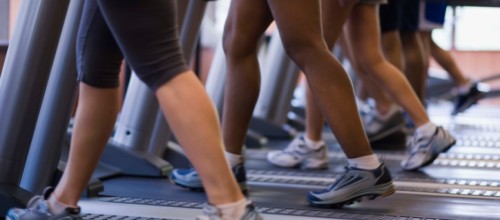
Common Mistakes in Summer Workout Routines
Avoid these summer training mistakes.
by Mike Mejia, CSCS
The summer months offer young athletes a great opportunity to get into better shape for the start of school and club sports in the fall. They also allow me a chance to see some of the things that kids (as well as the coaches and trainers they may be working with), are doing to get themselves more physically ready to compete. And while I certainly have nothing against motivated athletes working hard to gain a competitive edge, some of what I’ve seen in recent weeks has me a bit concerned to say the least!
So take a look at this list of some of the biggest summer training mistakes young athletes fall victim to and see if any of the items mentioned apply to the kids in your life.
1. Rushing through, or completely skipping warm-ups: Unfortunately, this is something I’m seeing happen with increasing frequency. From eager young athletes who make a bee-line for the weights as soon as they enter the gym, to coaches who start sprinting kids after a couple of rudimentary stretches, this failure to adequately prepare young bodies for intensive training has to stop!
Prior to every workout, practice and sports competition, athletes need to engage in a full-body movement prep. Drills like jumping jacks, hip bridges, traveling lunges with rotation and side shuffles will help kids transition from a state of active rest, to rigorous athletic movement. In addition to being sequential in nature- progressively increasing in both intensity and range of motion- it’s imperative that all the drills contained in these types of warm-ups be done with proper technique. Failure to do so may actually increase an athlete’s risk of injury! You can learn more about properly executed dynamic warm-ups here.
2. Doing “Speed and Agility” drills like your hair is on fire: Seeing a group of athletes running through agility ladders, or around various configurations of cones, with little if any attention being paid to proper running/ change of direction mechanics drives me absolutely nuts!
While there’s no arguing that these types of drills can go a long way towards helping kids improve their speed, agility, quickness and coordination, they need to be done with proper technique to achieve those results. When the sole emphasis is on how fast the drills are done, and not whether, or not the athlete is employing good movement mechanics, any gains that are made will likely be short-lived.
In order to have a lasting effect, speed and agility training must first focus on improving strength and mobility. This way, athletes will not only learn how to apply the necessary force into the ground for effective acceleration and deceleration, but they’ll also be better able to get into the proper positions to avoid injury while doing so.
Instead of having kids just run through endless drills with bad form and ingrain poor movement habits, take the time to teach them basic running mechanics first. The following video offers a great starting point.
3. Failing to fuel and hydrate properly: Summer schedules may afford growing athletes more time to sleep, but their lack of structure often throws kids’ dietary habits way out of whack. Waking up late and not getting in enough fuel poses a real problem for kids who engage in afternoon sports practices, or strenuous training. I can’t tell you how many times I’ve seen kids bonk during an afternoon workout because that bagel with cream cheese they threw down an hour or so earlier, just didn’t do the job!
Not taking in enough fluids is another big problem. Many young athletes walk around in an at least a partial state of dehydration as it is; add in outdoor workouts in the summer sun and things can get dangerous in a hurry! While sports drinks can help during intense activities that last over an hour in duration, more often than not, all kids really need to do is increase their intake of good old-fashioned H2O.
Here are some quick guidelines that will help them determine how much water to drink and when, along with a simple test to assess whether they’re properly hydrated.
4. Rushing into advanced forms of training: I get it. Towing weighted sleds, working the battle ropes, jumping up on platforms and flipping tires looks really cool…especially to motivated young athletes! The truth is though, as effective as these training modalities can be, they’re not suitable for everyone. Most teens have enough work to do in terms of improving things like mobility and core strength before they should even consider going anywhere near these types of exercises.
I cringe when I see kids trying to lift a heavy tire off the ground with the posture of a shrimp, or land from a plyometric jump with the inside of their knees practically touching each other. This type of training may work great for the RG III’s and Kobe Bryants of the world (who, by the way, have a lot more training experience under their belts), but perhaps it’s not the best idea for the JV football team!
So, anything look familiar? Although the list is short, I’m willing to bet that you know at least one young athlete (or coach), who’s guilty of a couple of these mistakes in their workout routines. If so, be sure to pass this information along so we can get a handle on this problem and help make kids’ summer vacations a lot more enjoyable and productive!
